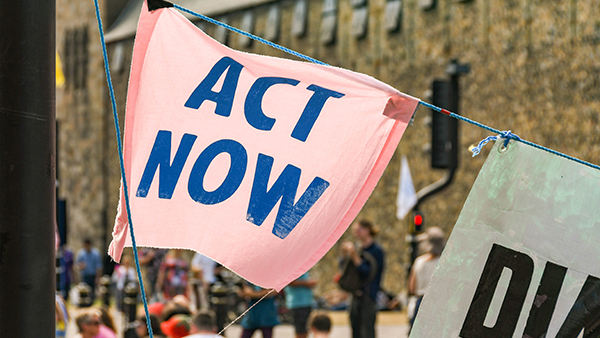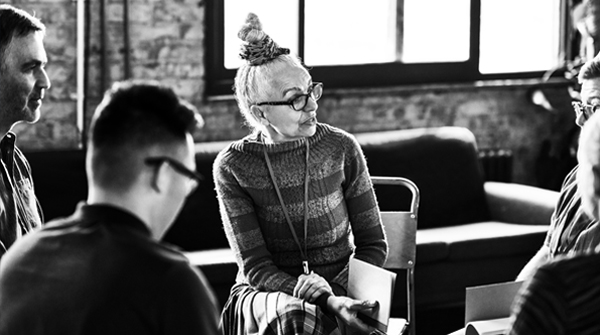Along with learning to play the guitar painfully slowly and running about 40km a week quite quickly for my age, my other self-improving hobby is to continue to explore and develop a set of ideas that I have been working with for several years.
These ideas are based on a fuzzy conceptual framework which goes under a variety of names including ‘cultural theory’, ‘neo-Durkheimian institutional theory’ and ‘the theory of plural rationality’. All versions of the framework draw heavily on the work of the anthropologist Mary Douglas. They each argue that there is a small number (generally four) ubiquitous ways of thinking about and acting on change in organisations and society. These are the ‘hierarchical’, the ‘individualistic’, the ‘egalitarian’ (I prefer ‘solidaristic’) and the ‘fatalistic’.
The framework provided the basis for my RSA annual lecture in 2013. In that lecture I suggested that the active ways of thinking – individualism, hierarchy and solidarity – could be seen as sources of power. I still hold this position, but reading the literature in this tradition there is clearly some ambiguity about what these things are; norms, frames, ideologies, predispositions, modes of behaviour, sources of legitimation etc.
Right now I prefer to think of them as ways of approaching the challenge of social coordination. Human beings are complex social beings who have to work together to survive and flourish. The hierarchical perspective puts emphasis on leadership, strategy and expertise as the way to coordinate human activity. The solidaristic view emphasises the glue of belonging and values. The individualistic view sees coordination as emerging largely spontaneously and its goal being to provide a platform of individual ambition and competitive endeavour. The fatalistic view sees effective coordination as either intractable or unlikely to deliver intended outcomes.
To see the very core of the four types as models of coordination doesn’t mean that is all they are. Each has a substrate in human evolution and psychology – these competing theories have emerged from who we are as a species. Also, these ideas combined with the concrete context in which people are trying to solve the coordination problem also generate behavioural and ideological predispositions. Solidaristic views – which emphasise membership and values - are often associated with strong ideologies (on both the left and right) while individualism goes with liberal attitudes (again of both left and right varieties).
Each model of coordination has its strengths and, in a fractal which stretches from individual preferences to global problem solving, each is always potentially available whenever we try to solve complex social problem. Furthermore for the kind of complex problems which the modern world increasingly generates, the best solutions and ways of working will combine aspects of each method. The problem is that each model is in significant part a critique of the others.
Indeed from a common sense perspective we can easily identify benign and malign versions of each model; hierarchy can be strategic and overbearing, individualism can be enterprising and selfish, solidarity can be altruistic and tribal.
This has led me to explore the proposition that the functional version of each model of coordination is precisely the one most compatible with the others. We might call the organisational form which successfully combines the insights and methods of each approach ‘fully engaged’:
Fully engaged hierarchy:
- Clear and consistent vision and strategy (what hierarchy does best)
- Listens, trusts and empowers (compatible with individualism)
- Ethical and brave (compatible with solidarity)
Fully engaged solidarity:
- Altruistic, values based (what solidarity does best)
- Committed to the leadership mission (compatible with hierarchy)
- Externally focussed, so celebrates achievement (compatible with individualism)
Fully engaged individualism:
- Energised, ambitious and creative (what individualism does best)
- Responsible and accountable (compatible with hierarchy)
- Empowering others as well as self (compatible with solidarity)
This approach can even be applied to fatalism. Benign fatalism (scepticism) alerts us to how difficult it is for organisations and groups to be fully engaged and how even successful combinations are vulnerable to shifts of power and changes in the environment, while the malign version (cynicism) not only assumes that full engagement is impossible but implicitly seeks to sabotage attempts to achieve it.
There are lots of questions to answer about this framework and the way I have elaborated it. Whilst, there are many bits of evidence which I think support the thinking this still falls a long way short of any kind of testable hypothesis. But it is the strengths and potentials of these ideas that keeps me at them.
It is an approach which combines a functionalist belief in the possibility of harmony and progress with a critical recognition that such order is elusive and always fragile. It is an approach which is systemic but not overly complex and technocratic. And, in stark contrast to most of what emerges from business schools and management consultancies, it is an approach to making organisations work which sees this as a job for everyone not just leaders.
Related articles
-
The public are ready to go further and faster on net zero
Anthony Painter
The public are ahead of policy-makers and, indeed, most of the business world. COP26 is an enormous opportunity to catch up. Global leaders should take it.
-
Can progressives ever stop the in-fighting?
Matthew Taylor
Biden's victory has caused the left and moderates to fracture again.
-
Can President Biden bring America together again?
Anthony Painter
There is a long road ahead for the new president.




Join the discussion
Comments
Please login to post a comment or reply
Don't have an account? Click here to register.
As with starting and running a business, different qualities, and ways of thinking, etc are important at different times - in the early stages, you need strong individuals - willing to take a risk and able to think strategically - later on (after a few years in our case), you need more analytical, community minded leaders, able to bring out the best in a team.